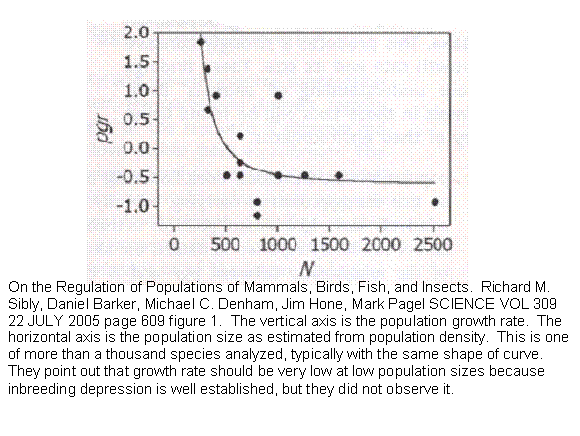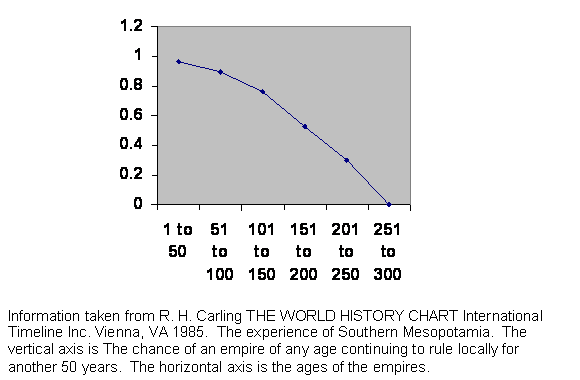Gaia on a different scale:
James Lovelock has published a new book (The Vanishing Face of Gaia – A Final Warning, Basic Books, New York, 2009). I do not presume to explain his theory, that’s what his book’s for, but let me give you my current understanding and reaction. What he proposes is that our biological world, combined with the geological world, is a super-organism, working together in a complex way so that the total effect of all species in the environment and the non-living part of the environment is to maintain that environment.
This is beyond question. Without animals to carry pollen, there would be no flowers, and without photosynthesis, there would be no animals breathing oxygen. He goes farther and suggests that, just as animals one way or another regulate their temperature, Gaia maintains the temperature of the earth, this being only one of a number of factors she keeps in homeostasis. Then global warming is a fever.
In fact he points out on page 59 that complex computer models of the climate assume that humidity is constant. Otherwise what they model becomes unstable. Let me emphasize that. Otherwise what they model becomes unstable. Obviously humidity is not constant. Therefore the best available physics and chemistry indicates that the climate should be unstable. So far, it has been fairly stable for quite some time. The climate is steady but not stable. Therefore there must be a mechanism that is regulating it. And any mechanism can break. There seems no room for disagreement on that one.
People may squirm because he says the world is alive, unlike Mars and Venus, but it does not reproduce. Not yet. But it could. If you went to Mars and found the right area you would only need to warm it up a bit and you could plant asparagus. You could plant asparagus today. The water is there. The soil is not bad. The sunlight and atmosphere are adequate, and for sure you aren’t going to have to deal with a lot of roundworms and other parasites in the soil. Extend that over a sufficient area of Mars, put in some animals and other life forms so you get a complex ecosystem. Yes, the animals will need oxygen, but the plants are making it. Eventually you could declare that it was a new living world and yes the Earth had reproduced.
Once one accepts that the Earth is alive, one must confront the issue that living things can die. Hence the warning of his book.
As humans, we have three treasures. There is our astronomical position, which despite a rapidly accumulating discovery of new planets still strikes me as remarkable. But it is probably under no threat. Then there is our biological environment, Gaia if you will, without which we could not survive. Given the fact that Gaia can live without people but people cannot live without Gaia, the survival of Gaia is as important as the survival of people. In fact it is more important. Given a suitable biological environment there will eventually be something like people; at least it happened before. Given only people, there will soon be neither people nor any other living thing. Our third treasure is the DNA that makes us human. That is what I am trying to save, biological humans. Of course it is possible that our high tech civilization could crash and not take absolutely every one of us down with it, but I would not even like to put odds on that. It is a lot easier to see how DNA abuse will take down our civilization.
Of the hundreds, now thousands, of people I have begged for help on this matter, most have been rude. A few have been courteous. Not one has lifted a finger on behalf of the issue itself. Since I have evidence and people ignore it, this can be put down to sheer superstition. I used to think superstitions were kind of sweet old fashioned silly traditions that did no harm. Now in my old age I find that superstition is killing our babies faster than we can replace them. Show me an exalted scientist, one with a reputation that gains him access to the world. Let me talk with him for an hour. Then stand back. That scientist will display one of three things: superstitious dread and on that basis an unwillingness to confront the facts, a splendid career destroyed in a quixotic attempt to save us, or humans safe (Gaia willing) for the first time ever. So far it is superstition three thousand, science zero. (I sometimes say I am not superstitious because it’s bad luck. Nobody with an IQ under 150 has laughed yet.)
I will not ask Lovelock for help. He is doing something more important. Not that I wouldn’t welcome any interest.
I have always warmed to the Gaia principle. Remember about a year ago I pointed out that global warming had a dagger in the sleeve. Warm up enough, the Arctic ice cap melts, during northern summer the Arctic Ocean absorbs more energy than any other place on earth, the northern atmospheric meridianal turnover reverses. A huge cyclonic storm develops over the North Pole that plasters us with a super hail storm such as that glaciers return within hours, and we are right back in a new ice age. If anybody out there has some time (I am throwing everything I’ve got into this project) trot out and look at the nearest glacier, the oldest part of it. Look carefully. Was it really made by snow or by giant hailstones? It might make you famous.
I used to try to think of ways in which humans and Gaia might be friends. Is there a service we humans offer to the biosphere that no other species can? The obvious one is recycling carbon. Carbon gets buried over the course of millions of years and only humans can dig it out or pump it out. It has been along time since I was a teenager, but in those days if you watched adolescent boys you could convince yourself that burning gasoline as fast as mechanically possible was the purpose of life. The trouble with that theory is that as soon as the accessible carbon is gone we won’t be needed again for a long time. That’s kind of gloomy. Besides, volcanoes put out a lot of carbon.
Another unique service we can offer goes back to our astronomical position. A few years ago comet fragments struck Jupiter and left holes into which you could have dropped the Earth. Another hole appeared recently. Such a strike could kill Gaia, not just us. And the risk to us is not trivial. If you multiply the population of the Earth by the risk of such a strike you come out with a number that is substantially greater than the number of people lost annually in aircraft accidents. For a while we were working on locating all dangerous objects in space with a view to deflecting any if needed. I understand that effort is now standing down, but it is something we could potentially do. No other living thing could. So to a mortal threat from space, with us as agents, only Gaia can go up and do battle.
Lovelock recons that global warming could reduce our world population to a few million. For a lot of things that would be plenty. We might have to give up super-conducting super-colliders, but we would not have to give up books. It is doubtful that we could protect the planet from lethal objects in space.
Getting down to business, you remember this graph of a typical set of annual field counts of animal populations from a paper that analyzed over a thousand such.

The same shape of curve has been demonstrated in humans and on a computer model. As you see, there is a given population size, unrelated to the environment, that a population seeks. Less than that and the fertility rate rises, greater than that and fertility falls. This is the kind of phenomenon that we expect from a homeostatic mechanism.
Biology generally considers significant units to be the individual (or individual hive) and the species as a whole. But the behavior is such that the real unit of survival is the local community. That is what manifests this kind of homeostasis.
The curve indicates that any population will tend to oscillate around a given value. And since the curve does not change over reasonable times, the oscillation must have a fixed characteristic period or length of time. If the maximum population is fixed in a critical range, then the oscillation is damped and there is long term stability. As we have seen long ago from the computer model, if the population rises too far there is a danger, experience suggests a moral certainty, of extinction.
Once again, here is the experience of Mesopotamian city states and empires.

Sure enough, there is a limited horizon for urban populations. The fall of a civilization is not the end of the world, so this would require a different word from Gaia. Unless of course the whole world is one civilization.
Which it is.
This just in: I notice a recent article, A Safe Operating Space for Humanity, John Rockström, NAURE vol. 461 no. 7263 September 24, 2009 page 472 has proposed some limits to parameters within which the world must be kept to keep a stable climate. I am reminded of what I did so much of as a young doctor, which was to seek to maintain the blood chemistries and other parameters of patients within acceptable bounds. It was, at least in part, balancing the humors, though of course we didn’t call it that. Now they have proposed a similar approach to the earth. I trust Dr. Lovelock is suitably gratified.
There have been 2,434 visitors so far.
Home page.

